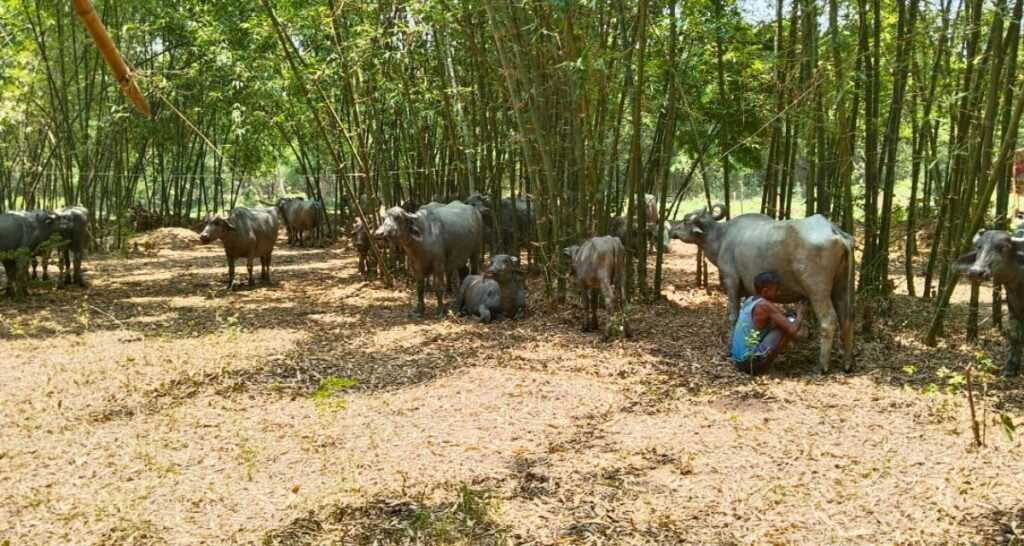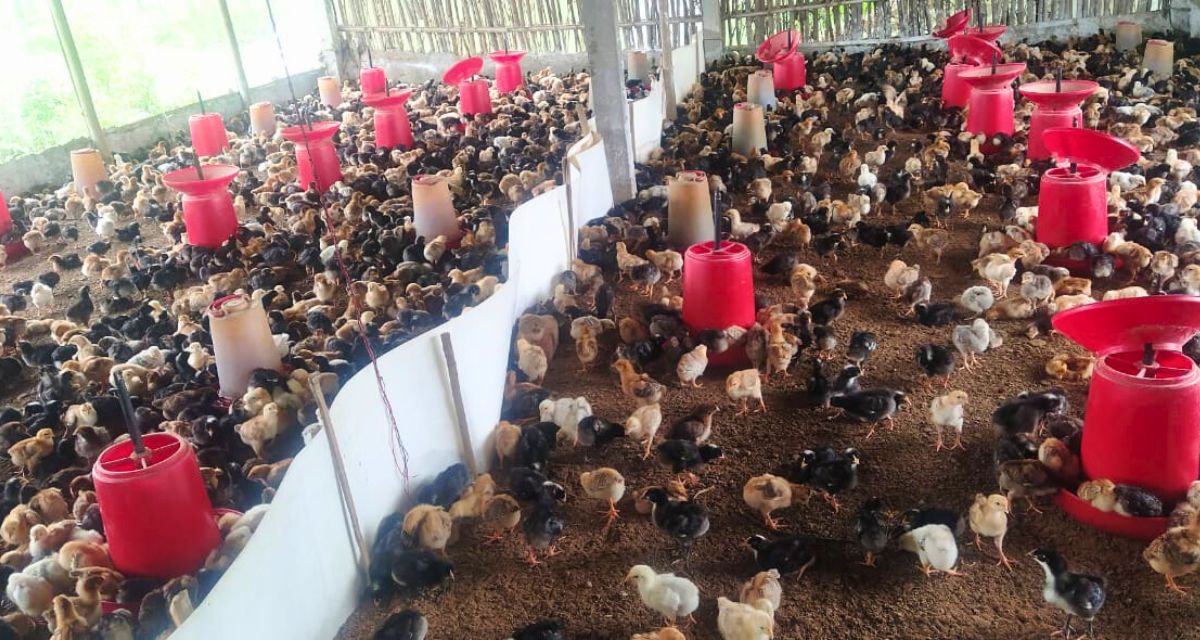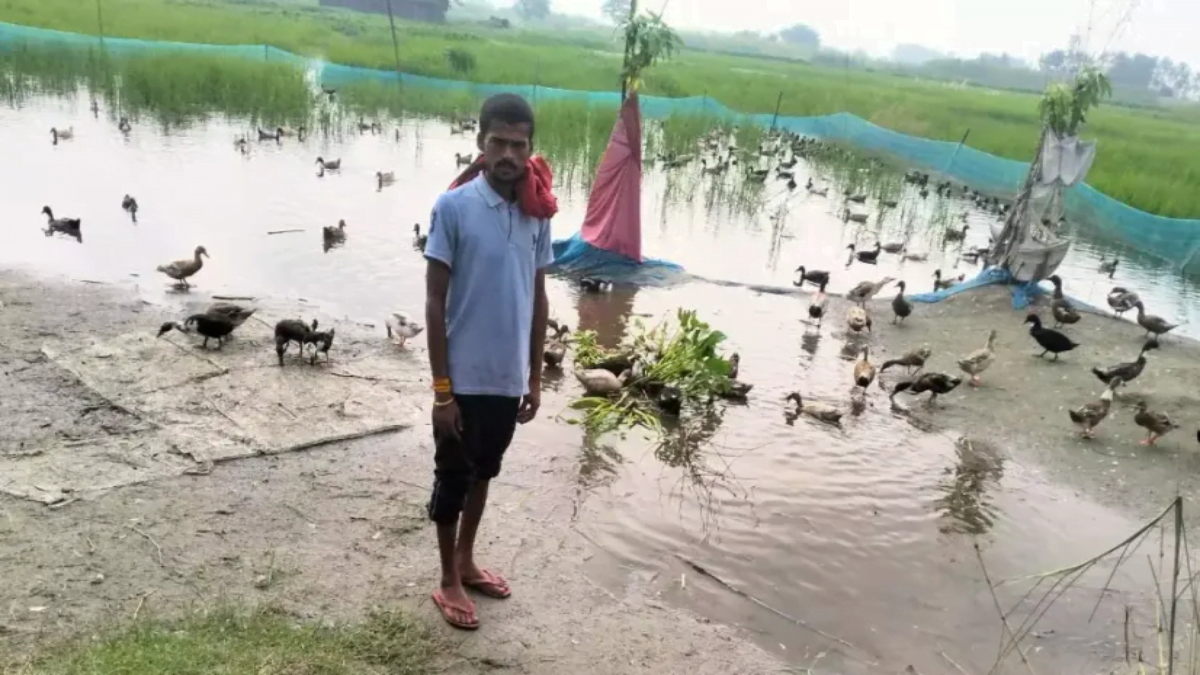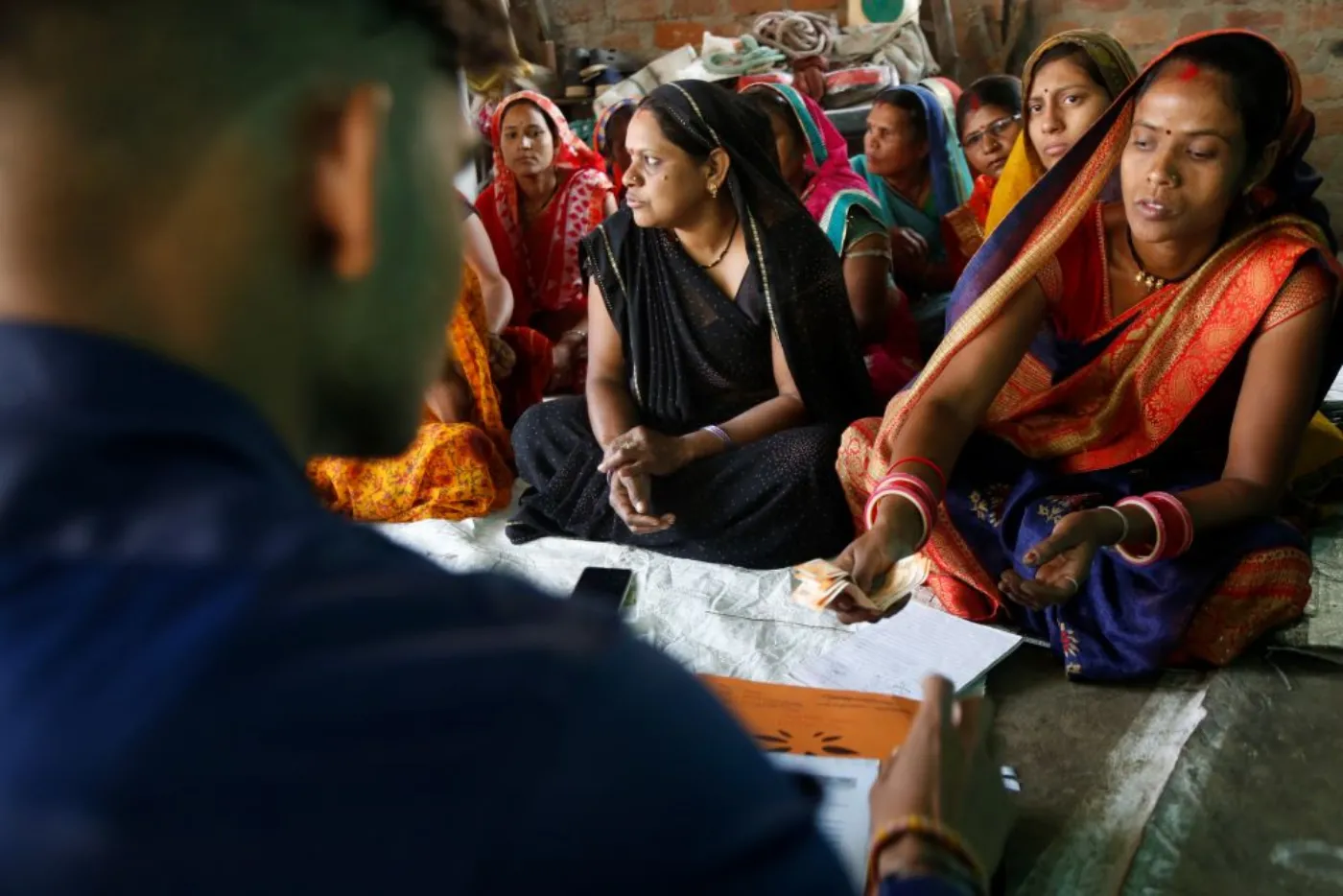By Rahul Kumar Gaurav
Youth move to low-cost duck farming or migrate to other states as shortage of green fodder reduces milk output and contagious diseases kill birds
Supaul, Bihar: ‘I do not want my children to get into this business ever. They might as well migrate to Delhi or Punjab and take up manual labour jobs rather than rearing animals all day,’ said Nayanan Yadav (50) of Amaha village in Supaul district of Bihar. He owns more than 10 buffaloes, but earns only Rs 30,000 per month by selling milk to sustain his family of 11.
The situation is similar in most of the houses in the village, where people have been abandoning their traditional occupation. Ramshankar Yadav (70) claimed around 40% of the villagers earn a living by selling milk. ‘It was more than 90% earlier,’ he added.
‘All our buffaloes are of indigenous breeds. Each one gives two to four litres of milk daily, which we send to the Sudha plant [Bihar’s dairy cooperative]. We are paid Rs 50 to 60 per litre, depending on the milk’s quality. We even tried keeping a jersey (crossbred) cow that gives more milk, but she got sick and died. And now, there is no money to buy another,’ Nayanan lamented, adding that it was easier to migrate.
Bihar is the poorest state in the country, with 33.76% of its population living in poverty. There are 82.9% marginal farmers in the state. ‘We do not own any land. Sometimes, we have to go very far to graze the animals. Earlier, we would graze them on common lands or in other people’s fields after harvest. But now people do not allow it,‘ Nayanan said.
‘Due to last year’s drought, a 25 kg sack of straw began to cost over Rs 200 to 250 against the earlier Rs 100. Half of the farmers in our village own jersey cows. But they get ill frequently, so people are turning back to indigenous breeds of cows and buffaloes,’ Ramshankar added.
According to the state animal and fisheries resources department’s 2022-23 annual report, Bihar has the fourth largest number of cattle at 1.54 crore and the fifth largest number of buffaloes at 77.19 lakh. The report said 132.13 lakh cattle have been vaccinated against foot and mouth disease in the 2022-23 fiscal. So far, 168.89 lakh cattle have been vaccinated against haemorrhagic septicemia and black quarter in a drive that began in October last year.

Fodder mismatch
Depending on milk yield and body weight, a crossbred cow needs four to five kg of green fodder and seven to eight kg of dry fodder every day. A buffalo requires more. That apart, 100 kg of readymade cattle feed costing Rs 2,500 should be fed to milch cows every month.
Green fodder is difficult to procure as village common lands get encroached, especially in peri-urban areas.
‘Wheat straw costs Rs 500 per quintal (100 kg) normally. It touches Rs 1,000 to 1,500, if there is a shortage,’ said Basant Yadav, a dairy farmer in Bihar capital Patna.
Green fodder is difficult to procure as village common lands get encroached, especially in peri-urban areas. ‘My brother is a dairy farmer in our village, but even he cannot afford to grow green fodder now. The small amount of land he has is used to grow vegetables,’ said Basant.
Dairy farmers thus resort to giving excess dry fodder, which leads to nutrition deficiency in milch animals and increased susceptibility to diseases. The problem is drastic in crossbred cows as they require more care.
‘People buy crossbred cows at exorbitant prices. If they give 15 litres of milk daily, they require more feed too. Additionally, they have low immunity in the tropical environments as they originally belonged to cold countries. However, marginal farmers cannot afford coolers and blowers in summers,’ Dr Uday Kumar, Secretary, Bihar Veterinary Association, told 101Reporters.
‘Initially, the cow gives milk but slowly due to nutritional deficiency, it falls ill, shows low fertility issues and sometimes even die,’ he said, while emphasising that adequate green fodder is the only solution. ‘Green fodder has more nutrients and is cheaper to procure. A kg of dry fodder costs Rs 12, but growing green fodder costs less than Rs 1,’ he said.
‘The National Dairy Development Board has come up with ideas like growing green fodder in off-season and making silage, growing moringa trees on the edges of the field and using its leaves for fodder. But what needs to change is people’s attitude. If they want to earn out of dairy, they will have to adapt,’ emphasised Kumar.
A jersey cow costs Rs 70,000 and a buffalo Rs 1 lakh. ‘How can a labourer surviving on Rs 100 to 200 buy them when even big farmers are scared of taking the risk? On top of that, Lumpy Skin Disease, Brucellosis and mumps have become common,’ said Arun Kumar Jha, who worked with the state agriculture department for 30 years.
‘The Central government’s Livestock Insurance Scheme has been in place since 2014, but villagers are mostly unaware. Thanks to low publicity, only 5% farmers in villages get any relief from the government,’ he added.
Under the Samagra Gavya Vikas Yojana, the government gives a subsidy of over Rs 2 lakh to establish a dairy of two to four milch cattle. Extremely backward classes and scheduled castes and tribes get 75% subsidy. But the benefits hardly reached dairy farmers. ‘This is a sham. The bank staff and government officials collude with the beneficiary. Cattle are bought only on paper and the money is distributed among all,’ said Praveen Kumar Jha, a former district agricultural officer of Supaul.
If a farmer musters up courage to invest in the dairy business or takes loans, he becomes hopeless within a year because of the expenses incurred on fodder and medicines.
According to the animal and fisheries resources department, milk production in Bihar increased from 92.41 lakh tonnes in 2017-18 to 121.19 lakh tonnes in 2021-22. The number of cows, buffaloes, goats and poultry birds also rose during the same period.
If a farmer musters up courage to invest in the dairy business or takes loans, he becomes hopeless within a year because of the expenses incurred on fodder and medicines. ‘Profits come in only after three years, when the cow delivers a calf that can be sold further. However, only affluent farmers can wait that long,’ said Praveen.

No respite for poultry segment in Supaul, Bihar
Neeraj has 3,500 chickens in his poultry farm in Sundarpur. He earns Rs 20,000 to 25,000 per month. ‘By village standards, this earning is enough and way better than agriculture. But a lot of money is spent on medicines too,’ said Neeraj.
Sanjay Paswan of Pipra Khurd panchayat has been running a poultry farm for six years. In April last year, bird flu spread and his 400 chickens were culled. The government gave a compensation eight months later at a low rate of Rs 90 for an adult bird and Rs 20 for a chick.
‘Once or twice a year, bird flu spreads and the authorities come to kill the birds. I only rear a few birds now so that the loss is not heavy. If the business dies now, I do not have the capital to set it up again,’ said Paswan.
Apart from bird flu, Ranikhet disease, Marek’s disease, fowlpox and Gumboro afflict poultry birds. ‘The government organises training programmes, but many entrepreneurs enter the business with no prior training. There are so many diseases in birds now that people do not understand them initially and by the time they do, most birds are dead. This is a big reason for losses in the poultry business,’ said Neeraj.
Retail business at meat shops has suffered too, affecting the backend. This monsoon, Jaibar Miyan, a meat shop owner in Patna, had to shut shop for two months. ‘Earlier, the shop would be closed only during deepavali and chhath puja. Now, people from various organisations instruct in advance that the shops should remain closed on festivals. Business is not even 30% of the normal from July to November. We normally sell about 1,500 chickens per day. During festivals, even 500 is good enough,’ he said.
Duck farming promising in Bihar
Pappu Kumar (35) finished engineering course and launched duck farming at Sakra Paharpur in Supaul’s neighbouring Saharsa district. ‘South Bihar has many duck farms. I bought my initial batch from there. I have 1,000 ducks at present. I am getting about 50% return as of now and plan to take it to a bigger level,’ Pappu told 101Reporters over a phone call.

Ducks are hardier and rearing them requires only a small piece of land to make a pond. This land is usually taken on lease. ‘I had a chicken farm earlier. As there was no profit, I started rearing ducks last year. I have 250 ducks now and the daily expense is Rs 500,’ said Vipul Kumar (26), a duck farmer in Patna.
Ducks are hardier and rearing them requires only a small piece of land to make a pond.This land is usually taken on lease.
The ducks survive mostly on worms and fish in the pond and no special arrangements are needed in winters. Each female duck gives around 250 eggs every year, which sell at a good price. ‘We only have to ensure that animals do not pick them and there is no theft. If the government decides to promote duck farming, it has a lot of potential,’ Vipul added.
About the author(s)
101Reporters is a pan-India network of grassroots reporters that brings out unheard stories from the hinterland.






